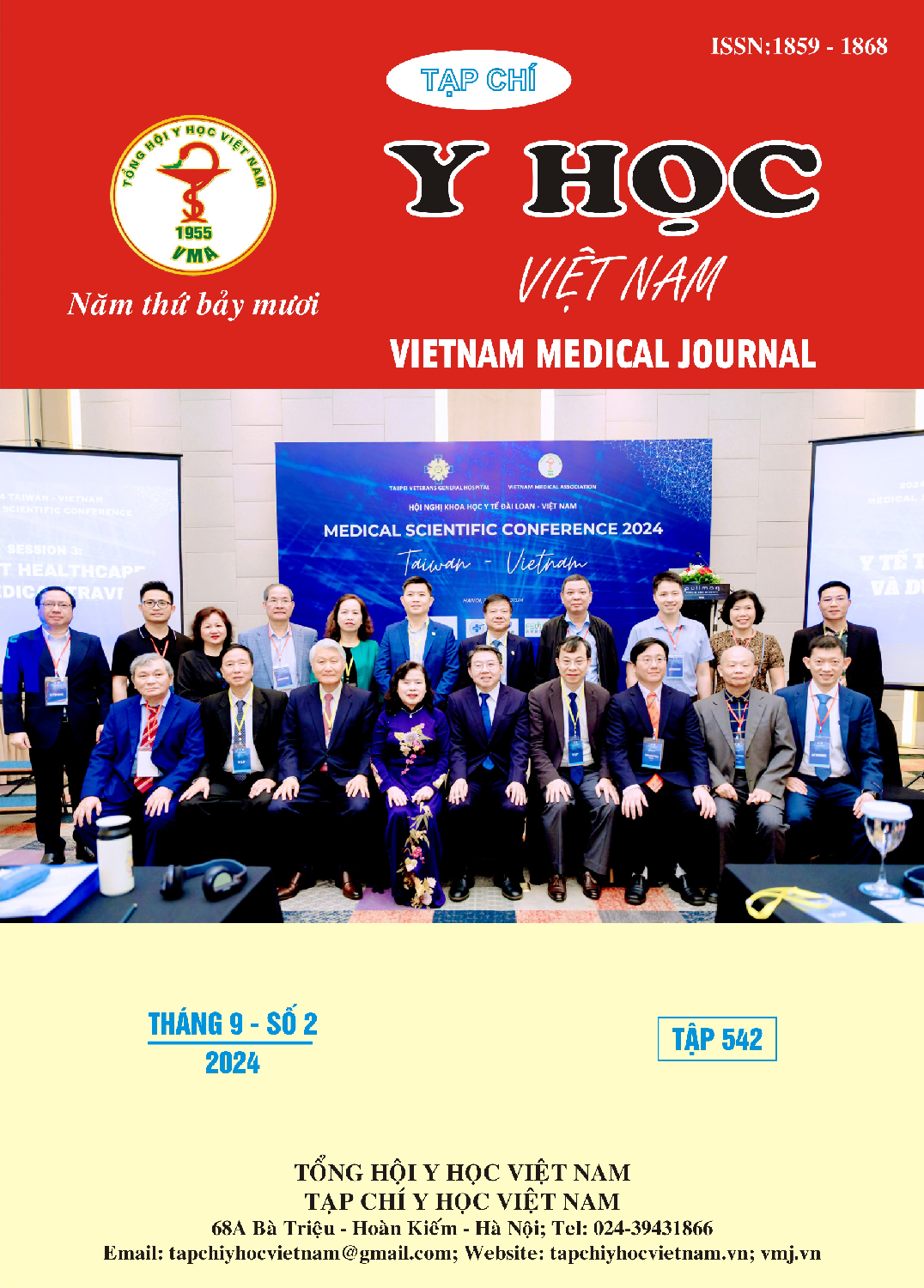EVALUATE OUTCOME OF LAPAROSCOPIC SURGERY REPAIR PERFORATED DUODENAL ULCER IN E HOSPITAL
Main Article Content
Abstract
Introduction: Peptic ulcer disease (PUD) affects four million people worldwide annually and has an estimated lifetime prevalence of 5-10% in the general population. Although the global prevalence of PUD has dramatically decreased in the past decades, the incidence of its complications has remained constant. Perforation occurs in 2–10% of cases of PUD with a high risk of mortality, especially among the elderly. The mortality rate of PUD perforations is in the range 10–40%. World Society of Emergency Surgery (WSES) recommend performing surgery as soon as possible with perforated peptic ulcer patient, in which laparoscopic surgery has many advantages. The research aim to evaluated outcome of laparoscopic surgery repair peforated duodenal ulcer in E hospital.
Material and methods: All patients management by laparoscopic surgery for peforated duodenal ulcer in E hospital between 01/2018 and 12/ 2022 were included. Demographics, ulcer characteristics, operative procedure,outcomes and follow up were recorded. Results: A total of 104 patients were identified, the male 4 fold female, mean age=48,3±19,6. The most common season which disease onset is autumn and winter, accounting for 59.9%. The most common risk factor is alcohol use (52.6%) . There were 11 patients (11%) with a Boey score of 1 point, the rest all had 0 points. The postoperative complication rate is 5%. Conclusion: The laparoscopic approach is an effective method for management of perforated duodenal ulcer in selected cases with many advantages include less postoperative pain, reduce hospital length of stay, low morbidity and mortality.
Article Details
Keywords
Laparoscopic surgery, perforated duodenal ulcer.
References
2. Fattahi Mohsen Abbasi - Kangevari Naser Ahmadi Nima and Razaei Negar. Quality of care of peptic ulcer disease worldwide: A systematic analysis for the global burden of disease study 1990- 2019. PLOS ONE.2022:1- 15.
3. Hua Man - Chin, Kong Man - Shan, Lai Ming - Wei, et al. Perforated Peptic Ulcer in Children: A 20- year Experience. Journal of Pediatric Gastroenterology and Nutrition.2007; 45:71- 74.
4. Bertleff M. J. and Lange J. F. Perforated peptic ulcer disease: a review of history and treatment. Dig Surg.2010; 27(3):161-9.
5. Hattingh G., Salas-Parra R. D., Nuzhad A., et al. Duodenal perforation in the pediatric population: two rare cases at a small community hospital. J Surg Case Rep.2020; 2020(11): rjaa455.
6. Liu Da-Yun, Gao An- Ning, Tang Guo- Du, et al. Relationship between onset of peptic ulcer and meterological factors. World J gastroenterol 2006; 12:1463- 1467.
7. Munoz Abraham A. S., Osei H., Martino A., et al. Incidence and Outcomes of Perforated Peptic Ulcers in Children: Analysis of the Kid's Inpatient Database and Report of Two Cases Treated by Laparoscopic Omental Patch Repair. J Laparoendosc Adv Surg Tech A.2019; 29(2):248-255.
8. Stepanyan S. A., Petrosyan A. A., Safaryan H. H., et al. Laparoscopic and open repair for perforated duodenal ulcer: single-center experience. Wideochir Inne Tech Maloinwazyjne.2019; 14(1):60-69.
9. Tarasconi A., Coccolini F., Biffl W. L., et al. Perforated and bleeding peptic ulcer: WSES guidelines. World J Emerg Surg.2020; 15:3.
10. Wilhelmsen M., Moller M. H., and Rosenstock S. Surgical complications after open and laparoscopic surgery for perforated peptic ulcer in a nationwide cohort. Br J Surg.2015; 102(4):382-7.


